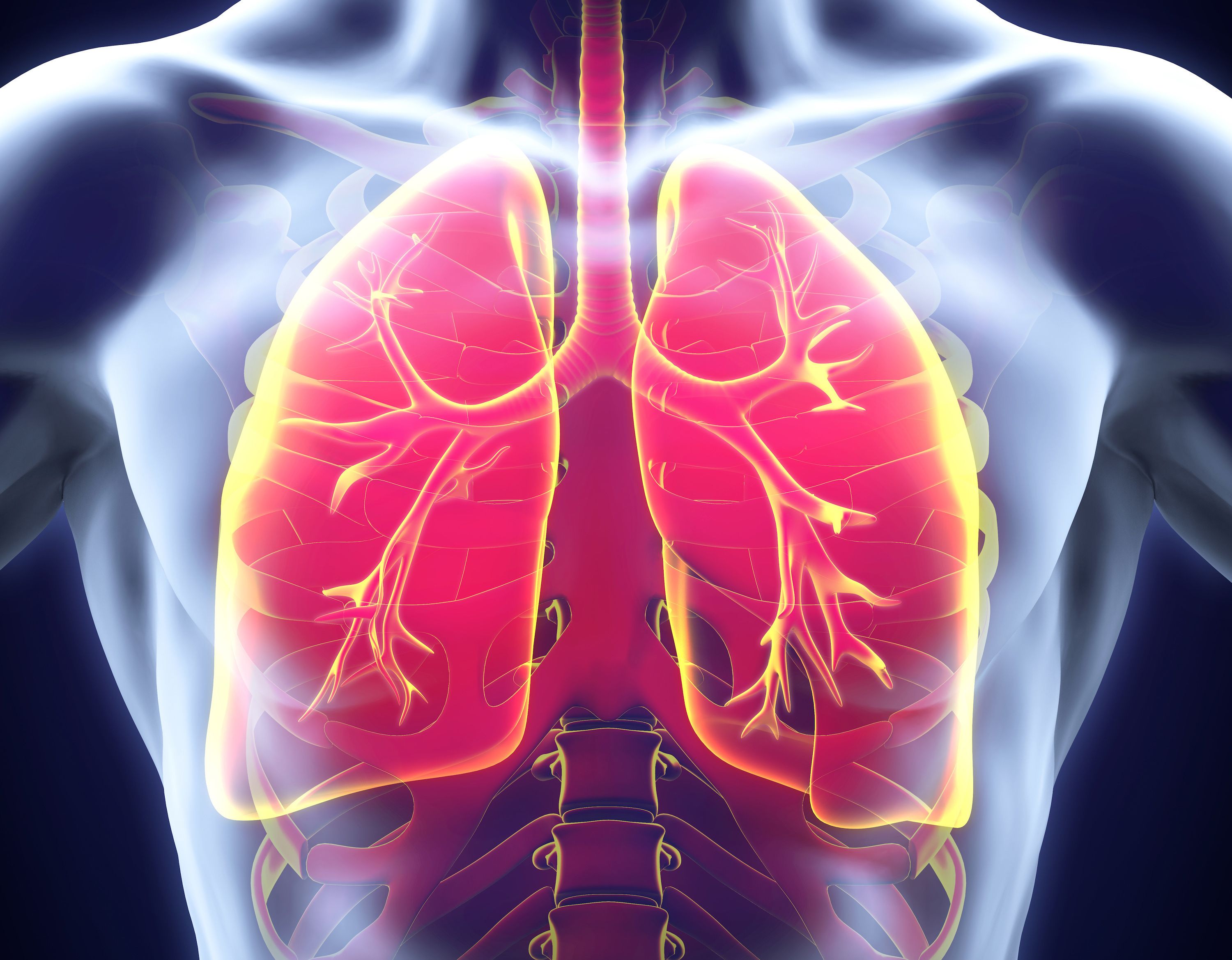More Can Be Done for Asian American Lung Cancer Patients

A recent study led by the National Cancer Institute (NCI) showed that lung cancer deaths have dropped steadily since 2001.1 Death rates for the most common form of lung cancer, non-small cell lung cancer (NSCLC),2 fell by about 3% every year from 2001 to 2013.1 The drop in mortality was even more pronounced – about 6% – from 2013-2016.1 The decline was mostly attributed to reduced smoking rates, but NCI researchers suggested that there may be a correlation between increased survival and the use of medicines that target specific genetic alterations in lung cancer cells.1
According to the authors, doctors began routinely testing people with metastatic non-small cell lung cancer (NSCLC) in 2013 for the alterations, or mutations, targeted by these drugs. The tests, known as biomarker tests, can help clinicians to determine which treatment options are more likely to be effective against a patient’s specific type of lung cancer.3 The key molecular biomarkers that play a role in metastatic NSCLC – and for which there are matching FDA-approved targeted treatments – are EGFR, ALK, BRAF V600E, ROS1, NTRK, MET and RET.4 Testing for actionable biomarkers has traditionally been done on tissue biopsy samples, although blood tests are now available as an additional option.5
Expert guidelines recommend that all patients with metastatic NSCLC get biomarker testing to better identify their specific cancer type.6 For example, people of Asian descent are at a higher risk of developing metastatic NSCLC caused by a mutation in the EGFR gene.7,8 These mutations present in up to 50% of Asian patients were diagnosed with a common subtype of NSCLC called adenocarcinoma, compared to only 10%-15% of patients in the US and Europe.9 However, only 60% of Asian metastatic NSCLC patients in New York and 57% of patients in Los Angeles – two of the most heavily populated Asian American cities in the United States – are being tested for EGFR mutations.10
Elaine Shum, MD

“Biomarker tests are critical in subsets of the population where we know certain lung cancer mutations like EGFR occur more often, such as in Asian Americans. We must educate these patients about their risk factors and the importance of biomarker testing as part of a complete lung cancer diagnosis,” said Elaine Shum, MD, Perlmutter Cancer Center at NYU Langone Health.
Many Asian Americans may not be aware of their lung cancer risk factors, including the higher prevalence of certain biomarkers, such as EGFR mutations, compared to other racial or ethnic groups. As the number of metastatic NSCLC cases and deaths continue to rise in some Asian American communities,11 a panel of lung cancer experts has identified several factors contributing to the disparity in this population. The panel, sponsored by AstraZeneca as part of the company’s “It's Okay to Ask” educational program, convened in Los Angeles on January 15, 2020 and virtually on October 29, 2020 to discuss this problem. “It's Okay to Ask” is designed to empower lung cancer patients and their caregivers to take a proactive approach to understanding their treatment options.
Social and Cultural Barriers to Care
Despite increased awareness of lung cancer in recent years, stigma and blame remain a challenge for patients. According to the panel, many Asian American lung cancer patients feel guilt or shame for missing work or for being unable to care for themselves and their family. The stigma of lung cancer can contribute to a sense of fatalism in both patients and their doctors – impeding timely and accurate diagnosis and treatment.
Cultural factors impact access to testing and treatment, panel members said. In many Asian communities, patients are socialized to accept information and instructions from their doctor without being actively involved. Patients may be reluctant to share their lung cancer diagnosis with family and friends because they don’t want to be a burden. Some adult children may be hesitant to tell elderly family members about a lung cancer diagnosis to shield them from emotional stress.
David Park, MD

“In Asian culture, the stigma of lung cancer may make it more difficult for some patients to fully confront the disease. We must help these patients understand that lung cancer isn’t their fault, and that it’s okay to talk openly about the disease and get help,” said David Park, MD, St. Jude Heritage Health.
Asian Americans who are diagnosed with metastatic NSCLC face real challenges. Biomarker testing as part of a complete diagnosis for metastatic NSCLC patients may be a key to solving some of the racial and ethnic disparities in lung cancer mortality and survival. The panel set forth strategies to increase Asian Americans’ access to testing and treatment along the continuum of care:
- Educate: Provide patients and caregivers with culturally and linguistically tailored information, educational tools, awareness campaigns, and doctors who can speak to patients in their native languages
- Empower: Confront the stigma of lung cancer with science, educating Asian Americans about their increased risk of having EGFR mutations
- Screen: Implement lung cancer biomarker testing in communities with dense Asian American populations with limited healthcare access
Panelists:
Elaine Shum, MD, Perlmutter Cancer Center at NYU Langone Health, New York
David Park, MD, St. Jude Heritage Health, Fullerton, California
Young Kwang Chae, MD, MPH, Feinberg School of Medicine at Northwestern Medicine, Chicago
Songchuan Guo, MD, Icahn School of Medicine at Mount Sinai, New York
Kin Lam, MD, Mount Sinai Beth Israel Medical Center and New York Presbyterian Hospital, New York
References
- Howlader N, Forjaz G, Mooradian MJ, et al. The effect of advances in lung cancer treatment on population mortality. N Engl J Med. 2020;383(7):640-649.
- American Cancer Society. Key Statistics for Lung Cancer. https://www.cancer.org/cancer/lung-cancer/about/key-statistics.html. Accessed September 24, 2020.
- Cancer.Net. Understanding Targeted Therapy. 2020. https://www.cancer.net/navigating-cancer-care/how-cancer-treated/personalized-and-targeted-therapies/understanding-targeted-therapy. Accessed September 22, 2020.
- Dong J, Li B, Lin D, et al. Advances in targeted therapy and immunotherapy for non-small cell lung cancer based on accurate molecular typing. Front Pharmacol. 2019;10:230.
- Seijo LM, Peled N, Ajona D, et al. Biomarkers in lung cancer screening: achievements, promises and challenges. J Thorac Oncol. 2019;14(3):343-357.
- Pennell NA, Arcila ME, Gandara DR, West H. Biomarker Testing for Patients With Advanced Non–Small Cell Lung Cancer: Real-World Issues and Tough Choices. Am Soc Clin Oncol Educ Book. 2019;39:531-542.
- Schabath MB, Cress D, Munoz-Antonia T. Racial and ethnic differences in the epidemiology and genomics of lung cancer. Cancer Control. 2016;23(4):338-346.
- Li T, Kung HJ, Mack PC, Gandara DR. Genotyping and genomic profiling of non-small cell lung cancer: implications for current and future therapies. J Clin Oncol. 2013;31(8):1039-1049.
- Midha A, Dearden S, McCormack R. EGFR mutation incidence in non-small-cell lung cancer of adenocarcinoma histology: a systematic review and global map by ethnicity (mutMapII). Am J Cancer Res. 2015;5:2892-2911.
- Diaceutics Data. Testing Rates for Asian Territories. February 2019. Accessed November 25, 2019.
- American Cancer Society. Cancer Facts & Figures 2016. Special Section: Cancer in Asian Americans, Native Hawaiians, and Pacific Islanders. Accessed November 25, 2019.
US-45758 Last Updated 12/20